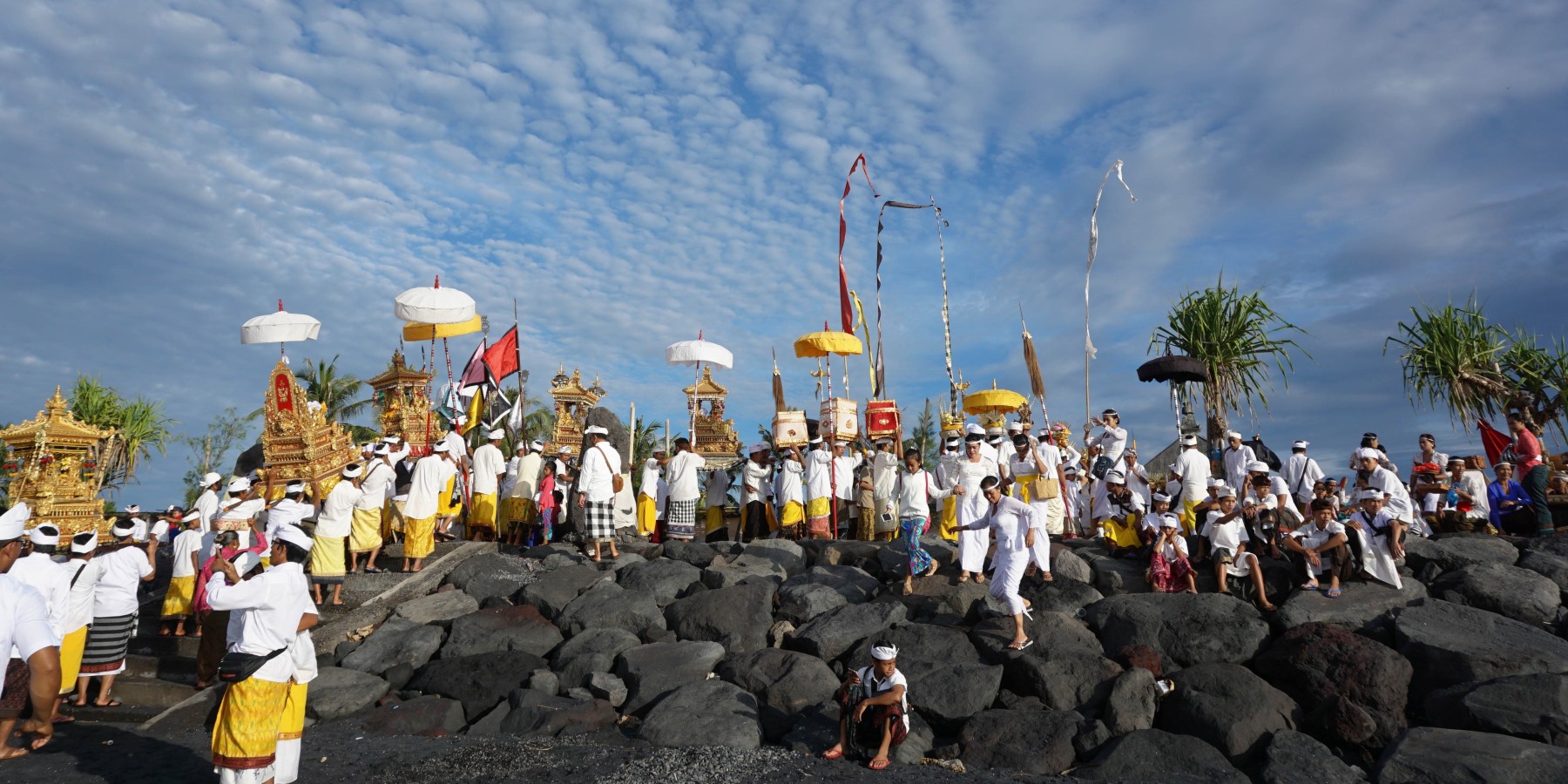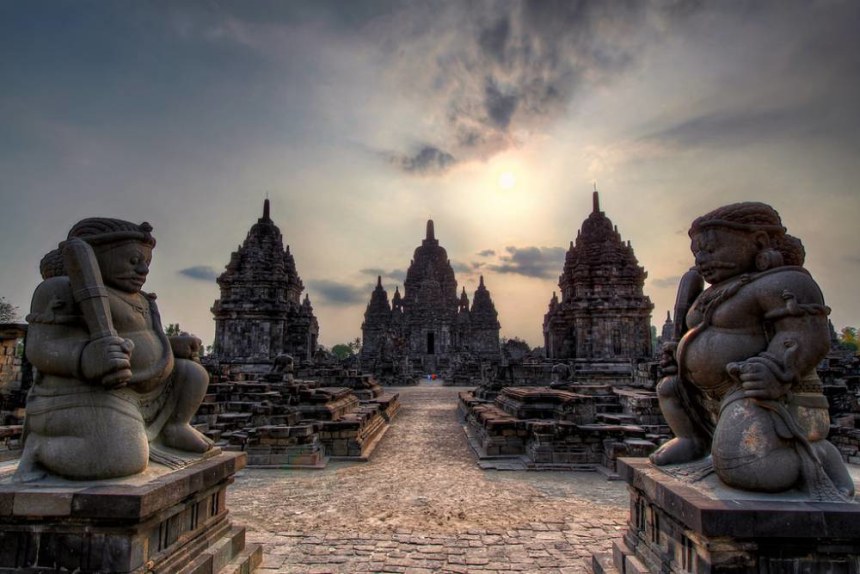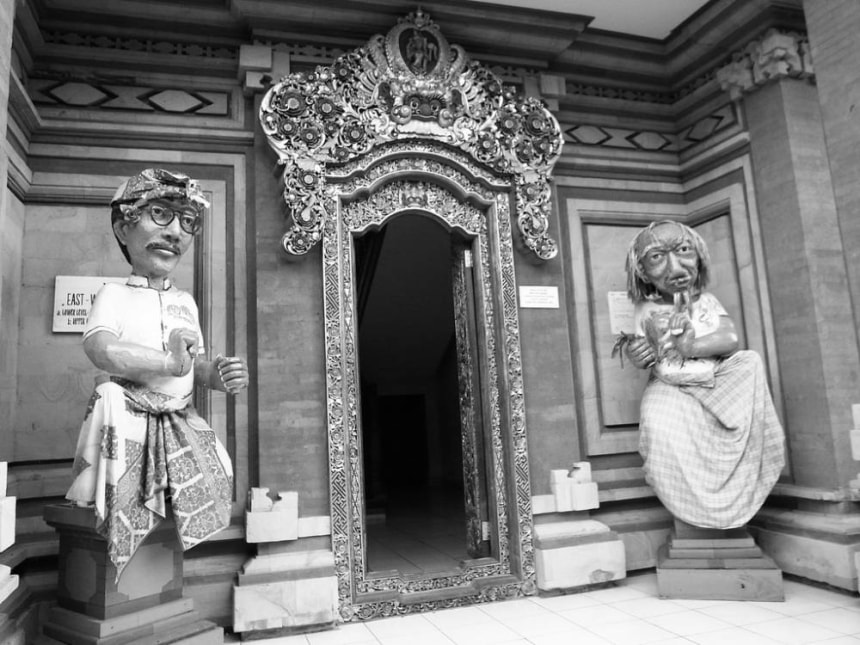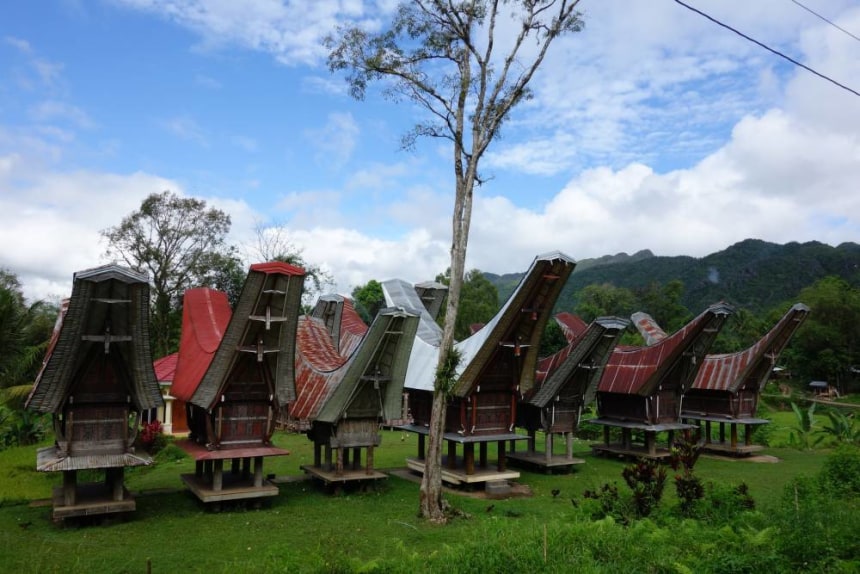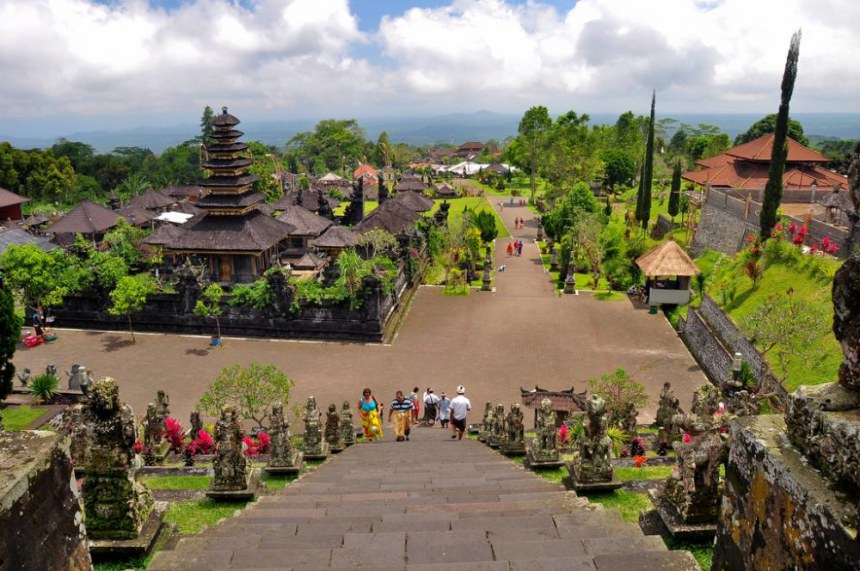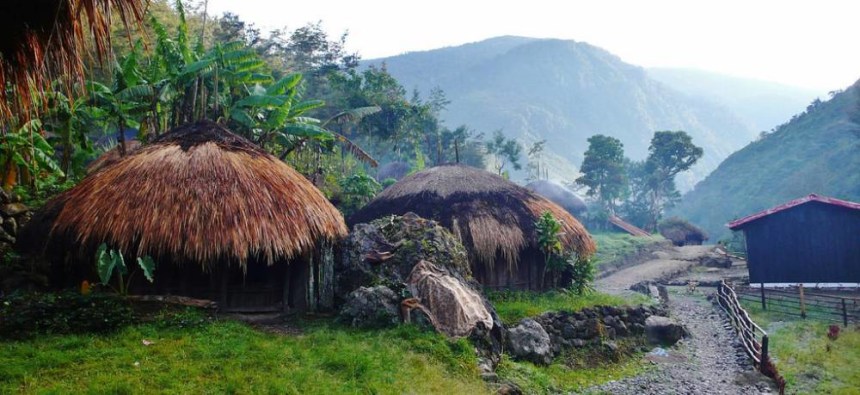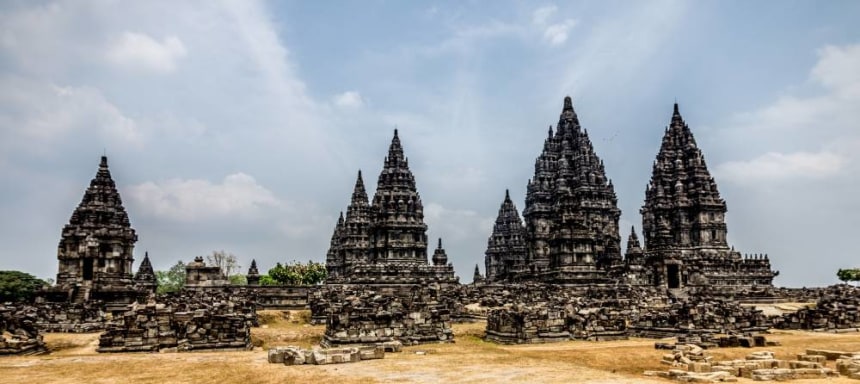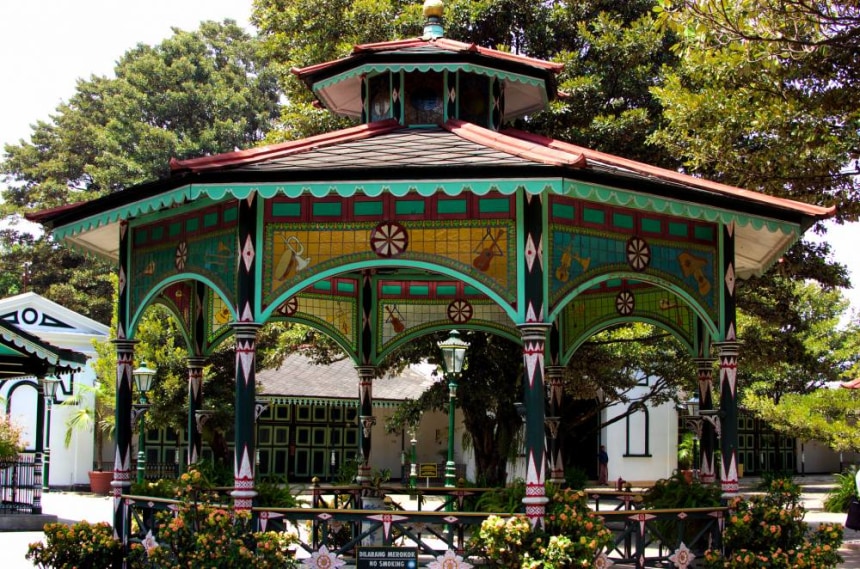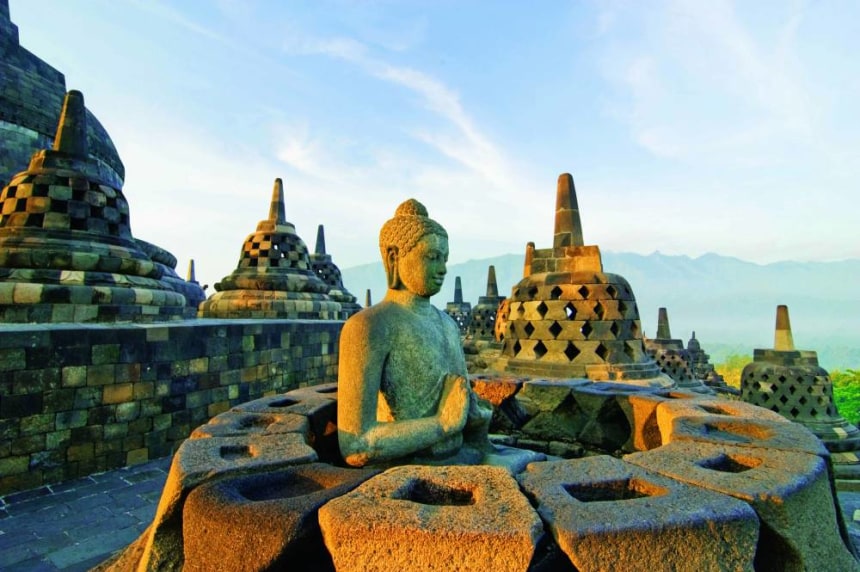| 6 mins read
By Joseph Francis
Move over sun and surf (Bali calling!) and glitzy cities (yes you, Jakarta); Indonesia is now fast becoming the stomping ground of culture vultures. And why not! With a fascinating compilation ranging from ancient Buddhist shrines to untrodden tribal valleys in the heart of Papua on the men, here is Indonesia tourism guide to uncover the country’s most fascinating cultural attractions.
Ubud
A real gem of the Nusa Tenggara and a fine place to start any cultural tour of Indonesia as a whole, this pretty town in the midst of south-central Bali comes bursting at the seams with fascinating Hindu temples and interesting architecture that belies the curious traditions of the Balinese religion. Head to the mysterious, macaque-dotted Ubud Monkey Forest to see some vine-clad stupas lurking in the woods before hitting the Goa Gajah for some lessons in Ubud’s 9th-century traditions. Then, engage an Ubud tour guide to reveal the town’s more modern, avant-garde edge, which comes courtesy of sites like the Neka Art Museum and the patronage of modern international artists alike.
Tana Toraja Regency
Deep in the central heartlands of Sulawesi, the Tana Toraja Regency plays host to some of Indonesia’s most fascinating and traditional tribal folk. Still known for their unique breed of animism and elaborate, elongated funeral rites, which often involve pagan-style dance shows, the construction of precipitous sepulchres on the Sulawesi cliffs and explosions of local music and food, the people here are often more than happy for outsiders to attend their sacred ceremonies. The rustic villages of the Tana Toraja people are also something to behold; coming elaborately adorned with protruding frontispieces crafted from jungle woods and tree boughs.
Pura Besakih
Steeped in mystery and heritage, the stupas and temple tops of the Pura Besakih complex remain unquestionably some of the most fascinating and enthralling in the country. They can be found poking their way above the Bali Sea on the slopes of the island’s towering Mount Agung; a symphony of Hindu gables and stepped roofs that all coalesce around the central sacred space of the Pura Penataran Agung – a glorious medley of carved icons and animist effigies that hosts as many as 70 religious festivals each year!
The Baliem Valley
Still considered one of the most remote and untrodden places on the planet, the Baliem Valley of central Papua only entered the modern Indonesian fold in the middle of the 20th century. It’s home to the indigenous tribespeople of the Yali and Dani, who can be found tending their gardens, honai homes (bamboo-clad yurt houses) and rustic plots of land between the eye-wateringly wonderful surrounds of the Central Cordillera of the New Guinea highlands, where the rugged, snow-topped tips of the Maoke Mountains meet the sky. Expect real, earthy villages and uber-traditional practices; a world entirely removed from modern, mechanised Jakarta or heady Bali!
Sangiran Early Man Site
Hailed by archaeologists and historians as one of the most important sites related to the study of ancient man on the planet, the Sangiran Early Man Site is now a proud UNESCO holder and visited by thousands of tourists each year. The nearly 60 square kilometer site in the middle of Java has yielded more than half of the world’s hominid fossils and today continues to reveal secrets about our earliest ancestors. An on-site museum chronicles the discovery of the famous Meganthropus hominid here and also offers insight into the area’s importance in the modern understanding of human evolution.
Prambanan Temple
High on the list of any Yogyakarta tour guide, and a real must for culture vultures and history buffs making their way through Java, the Prambanan Temple does well to reveal the deep, deep past of the Indonesian nation as a whole. Built sometime in the 9th century, when the archipelagos of Indochina were predominantly Hindu or Buddhist, the complexes here soar to form elaborate stupas and come adorned with mysterious carvings of Vishnu, Durga, Brahma and Shiva. The site is crowned by the mighty trio of the Trimurti Temples, which brim over with tales of the Hindu Ramayana and certainly helped the site achieve its prestigious UNESCO status back in 1991!
Muaro Jambi Temple Compounds
Set deep in the wild and untrodden heart of central Sumatra, the Muaro Jambi Temple Compound remains one of the most fascinating cultural and historical sites on the tentative UNESCO list of Indonesia. It reveals the millennium-old culture of the Melayu Kingdom, who thrived from the 11th century to the 13th century and built these soaring monuments to their Buddhist faith along the courses of the Batang Hari River. Stoic and unadorned for the large part, they represent an artistic tradition that’s unique in the country; manifesting in simple red-brick stupas and temple complexes that are unlike any other across Java and Bali alike.
Yogyakarta
Something like the artistic antithesis to modern, business-mad Jakarta, Yogyakarta is the perfect cultural escape for travellers leaving the capital. It can be found sandwiched between the Indian Ocean and the volcanic ridges of Gunung Merapi, awash with artsy districts where batik sellers abut Javanese coffee houses. The town is peppered with fantastic sites like the Kraton of Yogyakarta and Sultan's Square, which mark the regal past of the city, and is loaded as well with institutions like the Museum Affandi, chronicling the life of perhaps Indonesia’s most famous impressionist and post-impressionist and the curious character of his Picasso-esque work.
Borobudur Temple
A colossal complex of elaborately carved effigies of gods and Buddha statues that looms above the highlands of central Java, the Borobudur Temple is arguably the most enthralling and wondrous UNESCO Heritage Site in the country. It stands as testimony to the pre-Muslim age, when Buddhism was the chosen religion of the Sailendra Dynasty here. And what a testimony it is! Soaring candi (ancient temple buildings) dominate the area, peppered with elegant bell-shaped stupas that command the palm-spotted plains and volcanic valleys north of Yogyakarta. Meanwhile, the chants of pilgrims rise from the complex to this day, and interesting Vesak ceremonies take place in spring. It’s hardly surprising that this one remains Indonesia’s most visited cultural monument of all!
Joseph ‘Rich’ Francis is a freelance travel writer who has travelled extensively in Asia and Europe. He particularly enjoys the jazz bars of Poland, the ski slopes of Austria and the beaches and cities of India.
Image Details and Licenses: https://flic.kr/p/d8Eoqh (feriansyah, CC BY-NC-ND 2.0), https://flic.kr/p/6tTboz (is98wayi, CC BY-NC-ND 2.0), https://flic.kr/p/hpUkJc(Davy Demaline, CC BY-NC-ND 2.0), https://flic.kr/p/8KXXf1 (Edwin Sutanto, Edwin Sutanto), https://flic.kr/p/r38CCr (Globe Trotting, CC BY-NC-ND 2.0), https://flic.kr/p/pJP6dJ (Stéphane DAMOUR, CC BY-NC-ND 2.0), https://flic.kr/p/7HH5PF (rudy0help, CC BY-ND 2.0), https://flic.kr/p/gb3DdZ (deepgoswami, CC BY-NC-ND 2.0), https://flic.kr/p/oTLP23 (Roderick Eime, CC BY 2.0)

